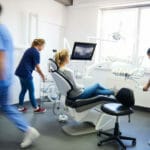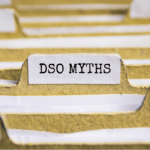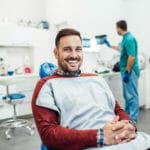Last updated on April 22nd, 2022
Introduction
Dental associations responses and actions around the world varied from advising practitioners to close their practices in California, USA; to reducing the number of routine check-ups in the UK; to no advice at all from several dental associations around the world. Such uncertainty is expected due to the varying degree of COVID-19 outbreak in different countries and due to the fact that the previous pandemic was influenza about 100 years ago. However, as governments begin to consider lifting or easing restrictions, specific guidelines on how to resume service operations remain a work in progress from many regions. For those regions where COVID-19 restrictions were lifted, ProDent Search has identified 4 universal best practices shared by associations and academic institutions that practices can reference when creating their service resumption plans.
1. Delay Non-Essential Procedures
Various preventative measures are being taken globally by dental practices to curb the spread of COVID-19. One of the recurring themes observed is to defer and avoid non-essential treatments. The Federal Dental Association of Germany has directed that treatment for high-risk groups should be reduced to an absolutely necessary level, especially to avoid contact in the waiting room or in the practice. The American Dental Association has also informed the dental community that “asymptomatic healthy appearing patients cannot be assumed to be COVID-19 free”. Testing kits are in shortage and limiting exposure by deferring non-essential and cosmetic procedures will help in reducing the risk of exposure to your staff and patients. Continuing to postpone elective procedures, surgeries, and non-urgent dental visits in favor of urgent and emergency visits is still recommended. To prepare patients for re-opening timelines, it is recommended that digital communications be leveraged. Open communication about steps being taken by your clinic and staff to manage the premises during the pandemic will ensure your patients are informed that your clinic is prioritizing everyone’s safety.
2. Virtual Triage & Patient Prescreen
Virtual triage, patient prescreening, and in-practice patient testing tools have become necessary service resumption elements. Pre-appointment screening should be done virtually through a phone, video conference, text messaging, or secure website, focusing on questions that ask about COVID-19 symptoms, recent travel, and any sicknesses in the home. These questions should be repeated on the day of the appointment, along with taking patient temperature in office to screen for fever. Asking these questions helps clinics reschedule if needed or prepare for any additional precautions needed. In addition to pre-screening patients, it is also recommended to check on the staff members regularly and monitor for any visible symptoms.
3. Implement New Office Visit & Patient Protocols
Every regional authority examined stated that revisions to existing office visits and patient protocols will have to occur in order to successfully reduce COVID-19 risks. These include changes to appointment scheduling, which should be done strictly using digitally means (ie. phone and online), and instructing patients to arrive on time for appointments and avoid spending additional time in waiting rooms or common areas. In addition, patients are recommended to limit extra companions to only essential people in order to reduce the number of people in the reception area.
To further minimize risk, health authorities also recommended making changes to waiting room design and patient amenities. These recommendations included removing reading materials, toys, and other objects that may be touched by others and which are not easily disinfected. Adjustments to waiting room seating arrangements which incorporate local social distancing guidelines were also common recommendations. Operational scheduling changes related to the use and re-use of operatories were also advised. Specifically, practitioners were advised to rotate operatories between procedures to allow for aerosols to settle before disinfecting, with timing dependent on room ventilation specifications.
4. Avoid Aerosol Generating Procedures
Regional bodies continue to stress avoiding the use of aerosol generating procedures (AGPs). AGPs are procedures that can generate aerosols that consist of small droplet nuclei in high concentration and present a risk for airborne transmission of pathogens that would not otherwise be spread by the airborne route (e.g. coronavirus, influenza). Examples of AGPs in dentistry include the use of a rotary dental handpiece (especially a high-speed handpiece) and the use of three-way air-water syringe. Non-aerosol generating procedures (non-AGPs) are procedures with lower likelihood of generating aerosols. Examples of non- AGPs would be procedures such as a patient exam, suture removal, simple extraction, incision and drainage, temporary restoration (without use of handpiece or air water syringe) and taking a panoramic radiograph. If aerosol generating procedures are deemed necessary for care, recommendations include the use of four-handed dentistry, high evacuation suction and dental dams to minimize droplet spatter and aerosols (cdc.gov).
Recovery Roadmap Series
Get a head start on how leading practices from across the United States and Canada are resuming practice operations in the post-COVID environment with Prodent’s Recovery Road Map Email Series.The 10 part series delivers actionable insights from front-line practices on the details of their strategic recovery roadmaps. Series topics include new patient acquisition, patient retention, risk reduction, P&L management, talent management, and more.
Found this article interesting? Check out our Insights page.
- The 5 Phases of The Dental Career Path - January 4, 2024
- 7 of the Highest-Paid Dental Specialties in 2024 - December 22, 2023
- How to Reduce Dental Fears: 7 Ways to Increase Patient Comfort, Attendance, and Retention - December 15, 2023
Looking To Hire Top Dental Talent?
Dentists, Find Your Next Dream Job Here.





